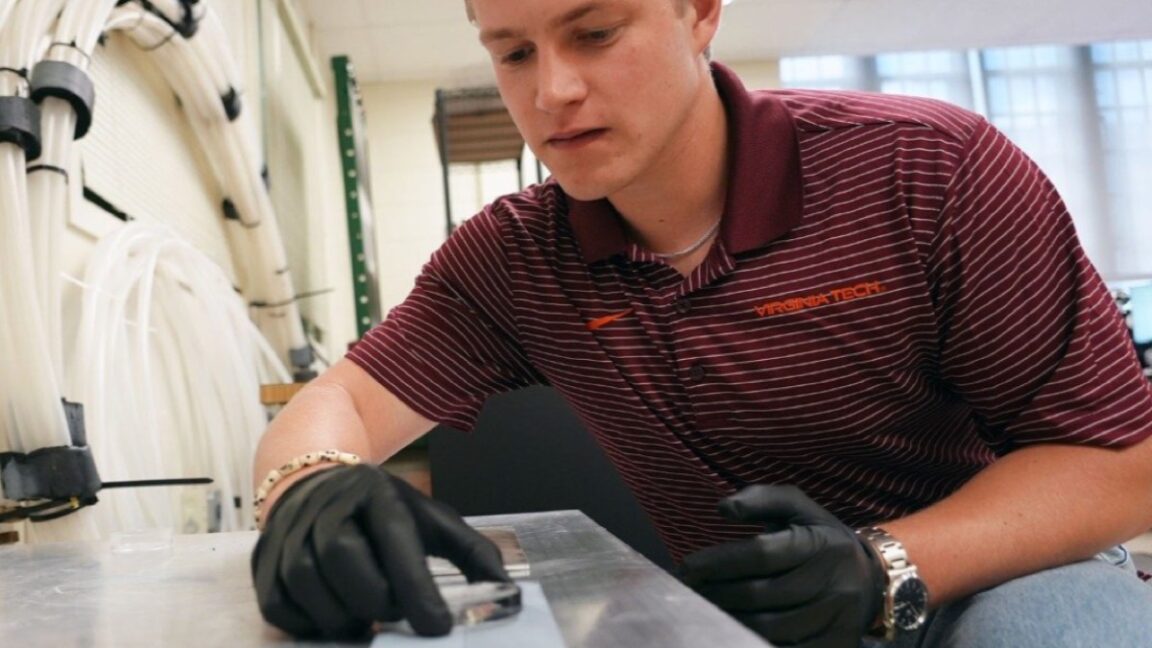Scientists have figured out how to make frozen discs of ice self-propel across a patterned metal surface, according to a new paper published in the journal ACS Applied Materials and Interfaces. It’s the latest breakthrough to come out of the Virginia Tech lab of mechanical engineer Jonathan Boreyko.
A few years ago, Boreyko’s lab experimentally demonstrated a three-phase Leidenfrost effect in water vapor, liquid water, and ice. The Leidenfrost effect is what happens when you dash a few drops of water onto a very hot, sizzling skillet. The drops levitate, sliding around the pan with wild abandon. If the surface is at least 400° Fahrenheit (well above the boiling point of water), cushions of water vapor, or steam, form underneath them, keeping them levitated. The effect also works with other liquids, including oils and alcohol, but the temperature at which it manifests will be different.
Boreyko’s lab discovered that this effect can also be achieved in ice simply by placing a thin, flat disc of ice on a heated aluminum surface. When the plate was heated above 150° C (302° F), the ice did not levitate on a vapor the way liquid water does. Instead, there was a significantly higher threshold of 550° Celsius (1,022° F) for levitation of the ice to occur. Unless that critical threshold is reached, the meltwater below the ice just keeps boiling in direct contact with the surface. Cross that critical point and you will get a three-phase Leidenfrost effect.
The key is a temperature differential in the meltwater just beneath the ice disc. The bottom of the meltwater is boiling, but the top of the meltwater sticks to the ice. It takes a lot to maintain such an extreme difference in temperature, and doing so consumes most of the heat from the aluminum surface, which is why it’s harder to achieve levitation of an ice disc. Ice can suppress the Leidenfrost effect even at very high temperatures (up to 550° C), which means that using ice particles instead of liquid droplets would be better for many applications involving spray quenching: rapid cooling in nuclear power plants, for example, firefighting, or rapid heat quenching when shaping metals.

